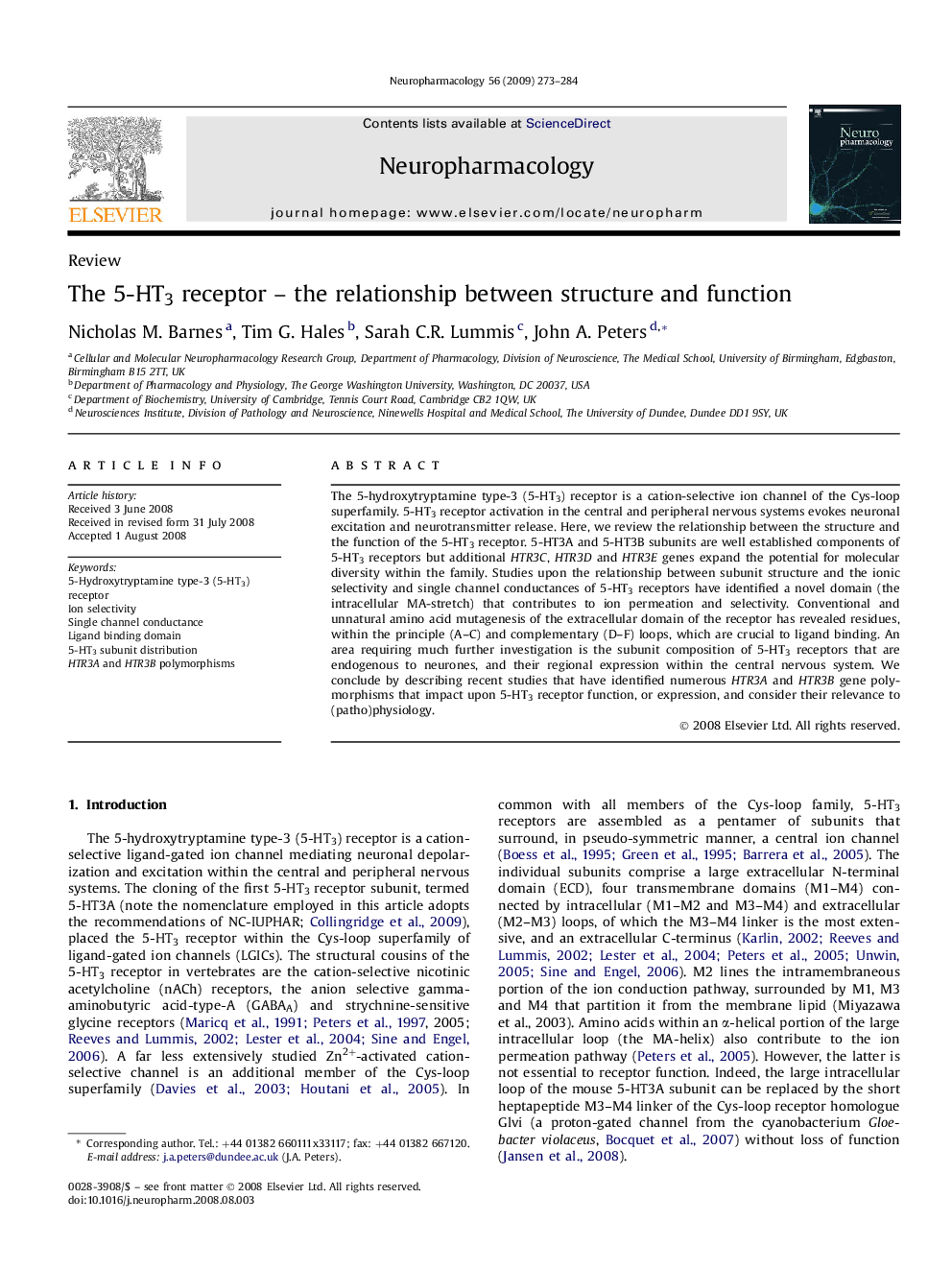| Article ID | Journal | Published Year | Pages | File Type |
|---|---|---|---|---|
| 5816208 | Neuropharmacology | 2009 | 12 Pages |
Abstract
The 5-hydroxytryptamine type-3 (5-HT3) receptor is a cation-selective ion channel of the Cys-loop superfamily. 5-HT3 receptor activation in the central and peripheral nervous systems evokes neuronal excitation and neurotransmitter release. Here, we review the relationship between the structure and the function of the 5-HT3 receptor. 5-HT3A and 5-HT3B subunits are well established components of 5-HT3 receptors but additional HTR3C, HTR3D and HTR3E genes expand the potential for molecular diversity within the family. Studies upon the relationship between subunit structure and the ionic selectivity and single channel conductances of 5-HT3 receptors have identified a novel domain (the intracellular MA-stretch) that contributes to ion permeation and selectivity. Conventional and unnatural amino acid mutagenesis of the extracellular domain of the receptor has revealed residues, within the principle (A-C) and complementary (D-F) loops, which are crucial to ligand binding. An area requiring much further investigation is the subunit composition of 5-HT3 receptors that are endogenous to neurones, and their regional expression within the central nervous system. We conclude by describing recent studies that have identified numerous HTR3A and HTR3B gene polymorphisms that impact upon 5-HT3 receptor function, or expression, and consider their relevance to (patho)physiology.
Related Topics
Life Sciences
Neuroscience
Behavioral Neuroscience
Authors
Nicholas M. Barnes, Tim G. Hales, Sarah C.R. Lummis, John A. Peters,
